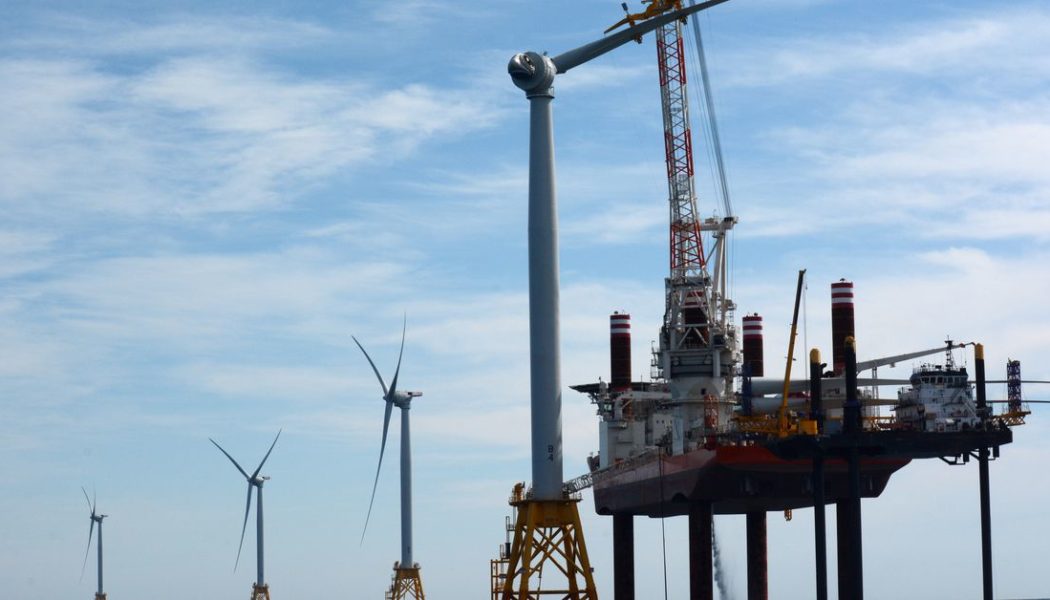
On Wednesday, the Biden administration announced a slew of new moves to transition the US to renewable energy, with a focus on upgrading the power grid and using public lands and waters to harness solar, wind, and geothermal energy. It’s the administration’s latest effort to clean up the nation’s electricity grid, as Democrats struggle to make headway on key legislation needed to tackle the climate crisis.
The Department of Energy is rolling out a “Building a Better Grid” initiative, which will put federal dollars to work after the recently passed bipartisan infrastructure law allocated $65 billion for grid improvements. Notably, there’s $2.5 billion earmarked for new and improved transmission lines that will be crucial for zipping renewable energy from far-flung solar and wind farms to communities. Another $3 billion will go towards smart grid technologies that aim to make homes more energy efficient and reduce pressure on the grid while balancing the flow of intermittent sources of renewable energy like wind and solar.
There’s also more than $10 billion in grants to states, tribes, and utilities for efforts to harden the grid and help prevent power outages. As the grid ages and extreme weather events are worsened by climate change, blackouts have grown longer in the US, with the average American going more than eight hours without power in 2020 — twice as long as was typical when the federal government started keeping track in 2013. Things could get worse without efforts to rein in greenhouse gas emissions.
The administration is also commissioning new national studies to inform its deployment of thousands of miles of additional transmission lines. And it pledged to convene with tribes, states, and local governments that might have a stake in the build-out of these lines, which often meet fierce opposition from local communities in their path.
Plans to auction off vast swaths of federal waters for offshore wind farms also moved forward today. The Bureau of Ocean Energy Management (BOEM) posted the final sale notice for six commercial lease areas in the New York Bight off the coasts of New York and New Jersey. Those lease areas stretch across 488,201 acres. Once developed, wind farms there could generate up to 7GW of clean energy — enough to power 2 million homes.
Still, members of the fishing industry have voiced concerns over how the wind farms could harm marine ecosystems and coastal economies. Interior Secretary Deb Haaland, New York Governor Kathy Hochul, and New Jersey Governor Phil Murphy announced a new partnership to work together on “job creation and environmental justice.” The National Oceanic Atmospheric Administration (NOAA) and BOEM also said they are entering a new interagency agreement focused on “protecting biodiversity and promoting cooperative ocean use.”
Senior administration officials described the lease sale, scheduled to take place next month, as a “really, really big deal” in a call with reporters. It is considered a key pillar in the administration’s plan to install 30GW of offshore wind capacity across the United States by 2030. Throughout the year, BOEM plans to keep momentum going on proposals to bring wind farms to areas off the Gulf Coast, California, Oregon, and central Atlantic.
The Biden administration also wants to “fast-track” the permitting process for wind, solar, and geothermal projects onshore. To speed up reviews, five agencies — the Departments of the Interior, Agriculture, Defense, Energy, and the Environmental Protection Agency — issued a memorandum of understanding to prioritize renewable energy proposals on public lands. The aim is to permit 25GW renewable energy projects on public lands by 2025.
Biden is trying to make good on commitments he’s made to move the power sector entirely to clean energy by 2035 and virtually eliminate planet-heating pollution from fossil fuels by 2050. But those efforts are in jeopardy as West Virginia senator Joe Manchin drags out Democrats’ negotiations on their roughly $1.75 trillion environmental and social spending bill. With clean energy provisions already whittled down in the bill, Biden will likely have to rely more heavily on the executive branch to meet his goals on climate change.









